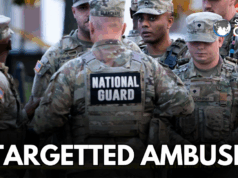India’s national security architecture has seen slow and steady evolution over many years. National Security Adviser Ajit Doval is the fifth to don that hat and two months ago, completed 10 years in the saddle, testimony to the faith Prime Minister Modi has in him.
In this chat on StratNews Global, Editor-in-Chief Nitin A. Gokhale takes us down memory lane to the early days of this security architecture, to Brajesh Mishra, the first NSA, and how the other paraphernalia now represented by the National Security Council Secretariat (NSCS), emerged.
Naturally, the focus of this show is more on the current rather than history, and there have been changes in terms of personnel. While Doval still presides over this apparatus, former R&AW chief Rajinder Khanna is the additional NSA. As Gokhale notes, this does not suggest a succession chain. In fact, Khanna may be around for only some months before giving way to someone else.
There have been other changes including a serving IFS officer and a serving officer from the Intelligence Bureau, moving into the NSCS as Deputy NSAs. They have specific responsibilities and will report to Khanna.
More on Doval about whom much is speculated but little may actually be known. At nearly 80, Doval has his work cut out overseeing internal security issues. He also handles some of India’s key foreign policy matters such as the US, China and Russia.
He is also responsible for the “securitization” of key sectors of the economy, such as railways, semiconductors and telecom. This flows from how technology has evolved to a point where those with a malign intent can target the economy and render the government and its agencies virtually “blind”. Doval’s job is to ensure that never happens.
Doval is also overseeing the national security strategy, which is now under formulation. It is expected to come out soon.
It’s also important to understand that what Doval represents is a largely made in India product, shaped as much by individuals as by his situation and the circumstances.
Nitin A. Gokhale is a media entrepreneur, one of South Asia's leading strategic affairs analyst and author of over a dozen books so far on military history, insurgencies and wars.
Starting his career in journalism in 1983, he has since led teams of journalists across media platforms.
A specialist in conflict coverage, Gokhale has covered the insurgencies in India’s North-East, the 1999 Kargil conflict and Sri Lanka’s Eelam War IV between 2006-2009.
Gokhale now travels across the globe to speak at seminars and conferences, and lecture at India’s premier defence colleges. He has founded three niche portals, Bharatshakti.in, stratnewsglobal.com and Interstellar.news.




